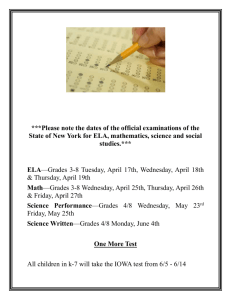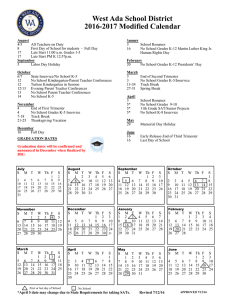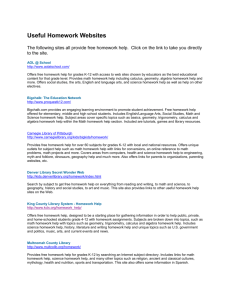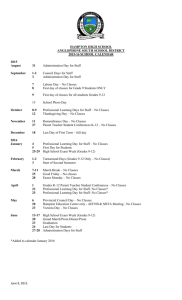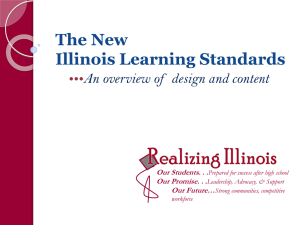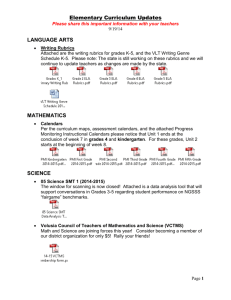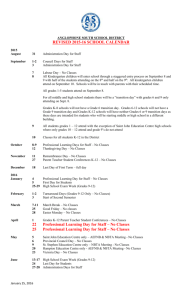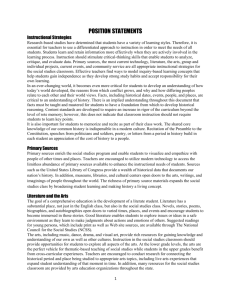March 2010 - Common Core State Standards
advertisement
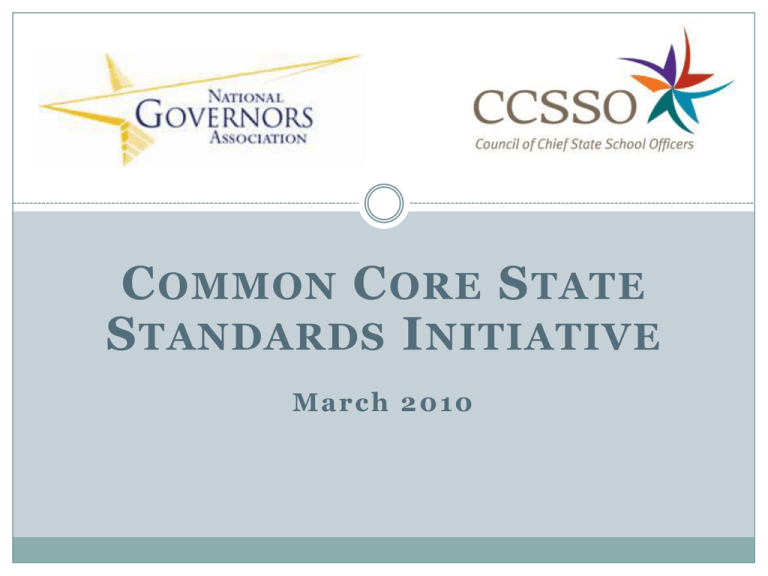
C OMMON C ORE S TATE S TANDARDS I NITIATIVE March 2010 Overview of the Initiative State-led and developed common core standards for K-12 in English/language arts and mathematics Focus on learning expectations for students, not how students get there. Why Now? Disparate standards across states Student mobility Global competition Today’s jobs require different skills Why is This Important for Students, Teachers, and Parents? Prepares students with the knowledge and skills they need to succeed in college and work Ensures consistent expectations regardless of a student’s zip code Provides educators, parents, and students with clear, focused guideposts What Momentum is There for the Initiative? 48 states, the District of Columbia, and two territories have signed on to the Common Core State Standards Initiative Criteria for the Standards Fewer, clearer, and higher Aligned with college and work expectations Include rigorous content and application of knowledge through high-order skills Build upon strengths and lessons of current state standards Internationally benchmarked, so that all students are prepared to succeed in our global economy and society Based on evidence and research Standards Development Process College and career readiness standards developed in summer 2009 Based on the college and career readiness standards, K12 learning progressions developed Multiple rounds of feedback from states, teachers, and feedback group and validation committee. Groups representing English language learners and students with disabilities were instrumental in developing the ELL and students with disabilities statements in the introduction to the standards. Public comment period on K-12 standards ends April 2. ELA Standards Advances The standards devote as much attention on what students read, in terms of complexity, quality, and range, as they do on how students read. As students progress through the grades, they must both develop their comprehension skills and apply them to increasingly complex texts. The progression of the standards is based on evidence and anchored in the college and career readiness (CCR) standards. The CCR standards define broad competencies and reading, writing, speaking, listening, and language while the K-12 standards lend further specificity by defining a developmentally appropriate progression of skills and understandings. In order to prepare students for the challenges of college and career texts, the standards require a rich reading of literature as well as extensive reading in science, history/social studies, and other disciplines. Students are required to learn certain critical content, including classic myths and stories from around the world, America’s Founding Documents, and foundational American literature. The standards also require that students systematically develop knowledge of literature as well as knowledge in other disciplines through reading, writing, speaking, and listening in history/social studies and science Math Standards Advances This draft focuses on core conceptual understandings and procedures starting in the early grades. This enables teachers to take the time needed to teach core concepts and procedures well and give students the opportunity to master them. In grades K-5 students gain a solid foundation in whole numbers, addition, subtraction, multiplication, division, fractions, and decimals. For example, students in Kindergarten focus on the number core (learning how numbers correspond to quantities and learning how to put together and take apart numbers) in order to prepare them for addition and subtraction. In the middle grades, students build upon the strong foundation in grades K-5 through hands on learning in geometry, algebra, probability, and statistics. The high school standards call on students to practice applying mathematical ways of thinking to real world issues and challenges and emphasize mathematical modeling. Adoption State adopts 100% of the common core K-12 standards in ELA and mathematics (word for word), with option of adding up to an additional 15% of standards on top of the core. A state will have adopted when the standards authorizing body within the state has taken formal action to adopt and implement the common core. States are responsible for demonstrating that they have adhered to this definition of adoption. Common Standards: The First Step Standards are essential, but inadequate. Along with standards, • Educators must be given resources, tools, and time to adjust classroom practice. • Instructional materials needed that align to the standards. • Assessments must be developed to measure student progress. • Federal, state, and district policies will need to be reexamined to ensure they support alignment of the common core state standards with student achievement. More Information Visit www.corestandards.org Sign up for Common Core State Standards updates: www.ccsso.org/whats_new/newsletters/commoncoreupdates.html

